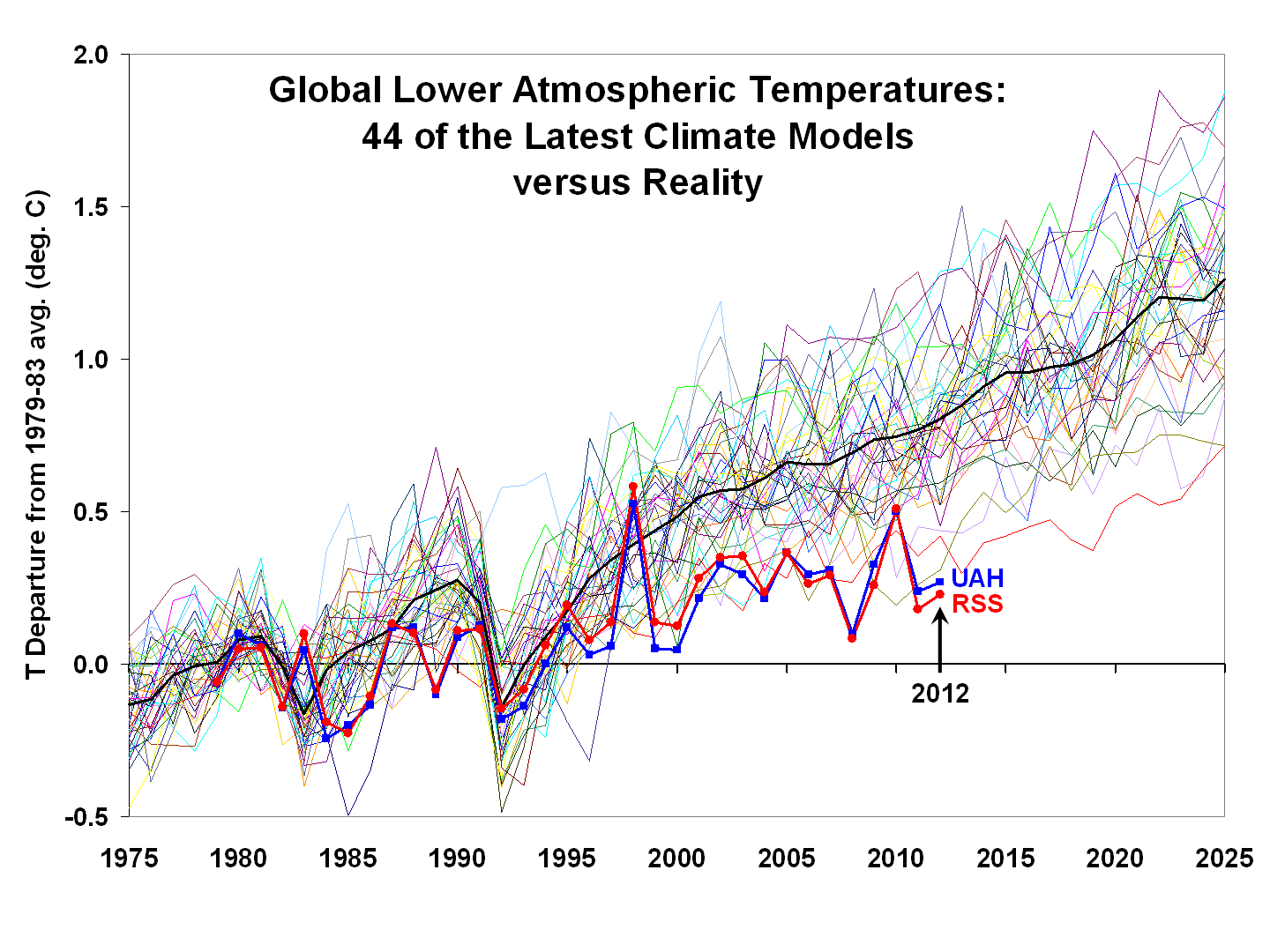Weekly John Locke Foundation research division newsletter focusing on environmental issues.
This newsletter highlights relevant analysis done by the JLF and other think tanks as well as items in the news.
Dr. Nicola Scafetta presents convincing data on climate cycles and solar cycles
As has been discussed in this newsletter on several occasions in the past, there has been a severe problem for the models that are being used to predict future climate change. We can’t yet say anything about their predictions of future global warming, but one thing is certain: their predictions of the past aren’t doing very well. When the predictions of computer generated climate models are matched up against actual global temperature change, their performance is shown to be pretty poor. The graph below comparing the temps with reality shows that the models all way over-predict warming.

Duke University Physicist Nicola Scafetta recently presented his research to the John Locke Foundation’s Shaftesbury Society Luncheon arguing that the reason for this discrepancy is that the computer models ignore the effect of solar cycles. Using hundreds and in some cases thousands of years of climate and solar cycle data, he argues that climate cycles and solar cycles match up very closely. More specifically he points out that there are 20 and 60-year cycles of changing solar intensity that, unlike changes in atmospheric CO2, correlate very closely with changes in global temperature. Much of this research was published in the Journal of Atmospheric and Solar Terrestrial Physics and summarized in Forbes magazine. As Forbes notes:
Scafetta’s findings contradict IPCC claims that all warming observed from 1970 to 2000 has been man-made ("anthropogenically-induced") based upon models that exclude natural quasi 20-year and 60-year climate cycle contributions. These cycles have been clearly detected in all global surface temperature records of both hemispheres since 1850, and are also evident in numerous astronomical records. The 60-year cycle is particularly easy to observe in significant surface temperature maxima that occurred in 1880-1881, 1940-1941, and 2000-2001. These momentarily warmer periods coincided with times when orbital positions of Jupiter and Saturn were relatively close to the Sun and Earth.
Going on, Forbes reports that:
Nicola Scafetta concludes that the scientific method requires that a physical model fulfill two conditions…it must be able to reconstruct as well as predict (or forecast) direct physical observations. Here, he argues that all climate models used by the IPCC can do neither. "They seriously fail to properly reconstruct even the large multi-decadal oscillations found in the global surface temperature which have climatic meaning. Consequently, the IPCC projections for the 21st century cannot be trusted." In fact, he argues that "By not properly reconstructing the 20-year and 60-year natural cycles we found that the IPCC GCMs have seriously overestimated also the magnitude of the anthropogenic contribution to recent warming."
In the video clip below, Scafetta makes the point in response to a question from a member of the JLF audience that the climate models do not deal with real data even when that data contradicts their predictions.
The entire talk can be viewed here.
Click here for the Environment Update archive.



